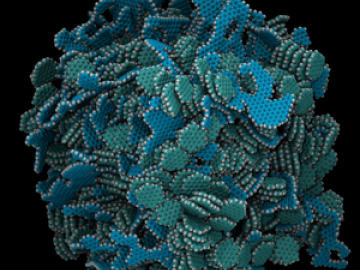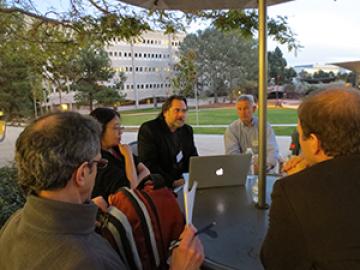
Filter News
Area of Research
- (-) Neutron Science (22)
- Advanced Manufacturing (10)
- Biological Systems (3)
- Biology and Environment (37)
- Biology and Soft Matter (3)
- Building Technologies (4)
- Chemical and Engineering Materials (2)
- Chemistry and Physics at Interfaces (5)
- Clean Energy (88)
- Climate and Environmental Systems (4)
- Computational Biology (2)
- Computational Chemistry (4)
- Computational Engineering (3)
- Computer Science (5)
- Earth Sciences (1)
- Electricity and Smart Grid (1)
- Energy Frontier Research Centers (6)
- Fuel Cycle Science and Technology (1)
- Functional Materials for Energy (8)
- Fusion and Fission (14)
- Fusion Energy (1)
- Geographic Information Science and Technology (1)
- Isotopes (12)
- Materials (46)
- Materials for Computing (25)
- Materials Synthesis from Atoms to Systems (8)
- Materials Under Extremes (5)
- Mathematics (1)
- National Security (7)
- Neutron Data Analysis and Visualization (2)
- Nuclear Science and Technology (6)
- Nuclear Systems Technology (1)
- Quantum Condensed Matter (2)
- Quantum information Science (3)
- Renewable Energy (1)
- Sensors and Controls (2)
- Supercomputing (36)
- Transportation Systems (4)
News Topics
- 3-D Printing/Advanced Manufacturing (1)
- Artificial Intelligence (2)
- Biology (2)
- Biomedical (2)
- Chemical Sciences (1)
- Computer Science (4)
- Coronavirus (2)
- Fusion (1)
- High-Performance Computing (1)
- Materials (3)
- Materials Science (6)
- Microscopy (1)
- Nanotechnology (2)
- Neutron Science (15)
- Physics (1)
- Quantum Computing (1)
- Quantum Science (2)
- Space Exploration (1)
- Transportation (1)
Media Contacts

Scientists have found new, unexpected behaviors when SARS-CoV-2 – the virus that causes COVID-19 – encounters drugs known as inhibitors, which bind to certain components of the virus and block its ability to reproduce.

Ken Andersen has been named associate laboratory director for the Neutron Sciences Directorate, or NScD, at the Department of Energy’s Oak Ridge National Laboratory.

Researchers at Oak Ridge National Laboratory’s Spallation Neutron Source have developed a diamond anvil pressure cell that will enable high-pressure science currently not possible at any other neutron source in the world.

For a researcher who started out in mechanical engineering with a focus on engine combustion, Martin Wissink has learned a lot about neutrons on the job

The ExOne Company, the global leader in industrial sand and metal 3D printers using binder jetting technology, announced it has reached a commercial license agreement with Oak Ridge National Laboratory to 3D print parts in aluminum-infiltrated boron carbide.

The COHERENT particle physics experiment at the Department of Energy’s Oak Ridge National Laboratory has firmly established the existence of a new kind of neutrino interaction.

For more than 50 years, scientists have debated what turns particular oxide insulators, in which electrons barely move, into metals, in which electrons flow freely.





